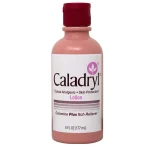“Healing is not just about mending the body but also restoring the soul.” This straightforward but powerful phrase captures the essence of healing, which is a journey that takes into account life’s physical, emotional, and spiritual aspects.
The term “healing” stands out as a potent change agent among the various instruments that support recovery. Not only that, but words have a special power to uplift, soothe, and revitalize. In fact, they have the power to restore connections, provide clarity, and inspire optimism. In this article, we will delve into the definition of healing, the idea of the healing word, and useful strategies for utilizing its transformative potential.
What is Healing?
Definition and Meaning
Fundamentally, healing is the process of reestablishing harmony, balance, and health. It encompasses emotional and spiritual well-being in addition to the simple healing of bodily wounds.
For a more comprehensive view, think of healing as “चिकित्सा” (Chikitsa) in Hindi, which means restoration, and “شفا” (Shifa) in Urdu, which means recuperation and renewal. Both phrases highlight the idea of recovery and rejuvenation.
Furthermore, synonyms for healing, such as recuperation, repair, and renewal, emphasize the complexity of this process while making it applicable in a variety of settings.
Healing in Psychology
Emotional and mental recovery are referred to as healing in psychology. It entails building resilience, redefining unpleasant events, and overcoming trauma. By addressing thought and emotion patterns, techniques such as emotional journaling and cognitive behavioral therapy (CBT) aim to heal the mind.
Cultural Perspectives on Healing
On the other hand, cultural differences in healing procedures reflect distinct customs and beliefs:
- In Thailand, spirituality, herbal medicines, and mindfulness are frequently combined in Thai healing. For instance, traditional Thai massage is a well-known illustration of holistic therapy.
- Meanwhile, in India, Ayurvedic and yoga practices emphasize balance between the body, mind, and spirit.
- Conversely, in Western cultures, advanced medical procedures and psychological therapies are essential to the healing process.
The Healing Process
Stages of Healing
Healing is a journey that unfolds in stages:
- Physical Healing: Involves the body’s natural repair mechanisms, such as tissue regeneration and immune responses.
- Emotional Healing: Focuses on overcoming grief, trauma, or emotional pain through acceptance and understanding.
- Social Healing: Restores harmony in relationships, communities, and societal structures.
Healing Therapies
Alternative and contemporary therapies provide a number of avenues for recovery:
- Art Therapy: Expresses emotions via the use of creativity.
- Sound Therapy: Employs soothing sounds to promote relaxation and balance.
- Yoga and Meditation: Holistic practices that integrate physical and emotional well-being.
The Role of Words in Healing
The Concept of the ‘Healing Word’
Words of encouragement have great power. A simple statement like “I believe in you” or “You’re not alone” might offer consolation and hope. Kind words activate the brain’s reward system, releasing dopamine and oxytocin, which foster healing and connection, according to psychological research.
Healing Quotes and Affirmations
Quotes about healing provide everlasting insight and motivation:
- “The wound is where the light enters your being.” – Rumi
- “Healing requires courage as well as time.” Unknown
Positive self-talk is reinforced by affirmations like “I am resilient and growing stronger every day,” which promote inner calm.
How to Use Healing Word
Use these techniques to harness the power of healing word:
- Journaling: To achieve emotional release and clarity, write down your feelings and thoughts.
- Gratitude Practice: Turn your attention to the positive by recognizing your everyday benefits.
- Affirmations: To increase resilience and confidence, talk to yourself positively every day.
Popular Healing Resources
Healing in Media
The media can inspire and provide solace. For instance, The Pursuit of Happyness and Good Will Hunting are two examples of healing films that examine themes of development, fortitude, and overcoming hardship. As a result, these movies have a profound emotional impact and provide viewers with inspiration and comfort.
Books, Apps, and Tools
- Books: Bessel van der Kolk’s The Body Keeps the Score is one book that examines the science of trauma and recovery.
- Apps: For mental and emotional healing, programs like Headspace and Calm offer guided meditations.
- Online Platforms: By sharing healing tales, communities such as Hilink promote support and connection.
How to Embark on Your Healing Journey
It takes self-compassion and patience to begin a healing process. To begin with, here are some doable actions to get started:
- Practice Mindfulness: To lower anxiety and increase awareness, practice mindfulness by concentrating on the here and now.
- Seek Support: Talk to therapists, family members, or trustworthy friends about your journey.
- Prioritize Self-Care: For general recovery, regular exercise, a healthy diet, and enough sleep are essential.
- Set Intentions: Specify precise objectives for your bodily, mental, or spiritual healing.
Recall that healing is an ongoing process of development and rejuvenation rather than a race.
Conclusion
The ability of language to change lives is demonstrated by the healing word. In challenging circumstances, words—whether written, spoken, or thought—can offer consolation, strength, and hope.
Ultimately, all forms of healing serve as a reminder of our ability to bounce back, develop, and flourish. By embracing the healing power of words and encouraging optimism, we open the door to a happier, more satisfying existence.
As Rumi sagely advised, “Remember that your suffering will eventually become your remedy; don’t lose sight of it.”
FAQs
How can healing words impact mental well-being?
To begin with, healing words have the ability to shift mindsets, reduce stress, and foster positive emotions. Moreover, encouraging phrases can activate the brain’s reward centers, thereby boosting hormones like dopamine and oxytocin that promote emotional recovery.
What are some examples of healing words/affirmations?
For instance, examples of healing words/ affirmations include:
- “I am deserving of love and kindness.”
- “Each day, I am growing stronger and more resilient.”
- “I release the past and embrace the present with hope.”
How does journaling contribute to the healing process?
Notably, journaling provides a safe outlet to express emotions, process experiences, and gain clarity. Additionally, it can help individuals identify patterns, reframe negative thoughts, and track personal growth over time.
Can healing practices be effective without professional therapy?
While it is true that professional therapy can be transformative, healing can also occur through self-care, mindfulness, and community support. Furthermore, practices like meditation, gratitude exercises, and affirmations are valuable tools for self-healing.
What role does cultural background play in healing?
Importantly, cultural beliefs and traditions shape healing practices. For example, yoga and Ayurveda in India emphasize mind-body harmony, whereas Thai traditions integrate spirituality and herbal remedies. Therefore, understanding and respecting cultural perspectives can enhance holistic healing.
Are there any scientific studies supporting the power of positive words?
Certainly, numerous studies in psychology affirm the impact of positive words. Specifically, research shows that supportive language can reduce cortisol levels, improve mood, and enhance social bonds, all of which significantly contribute to healing.











